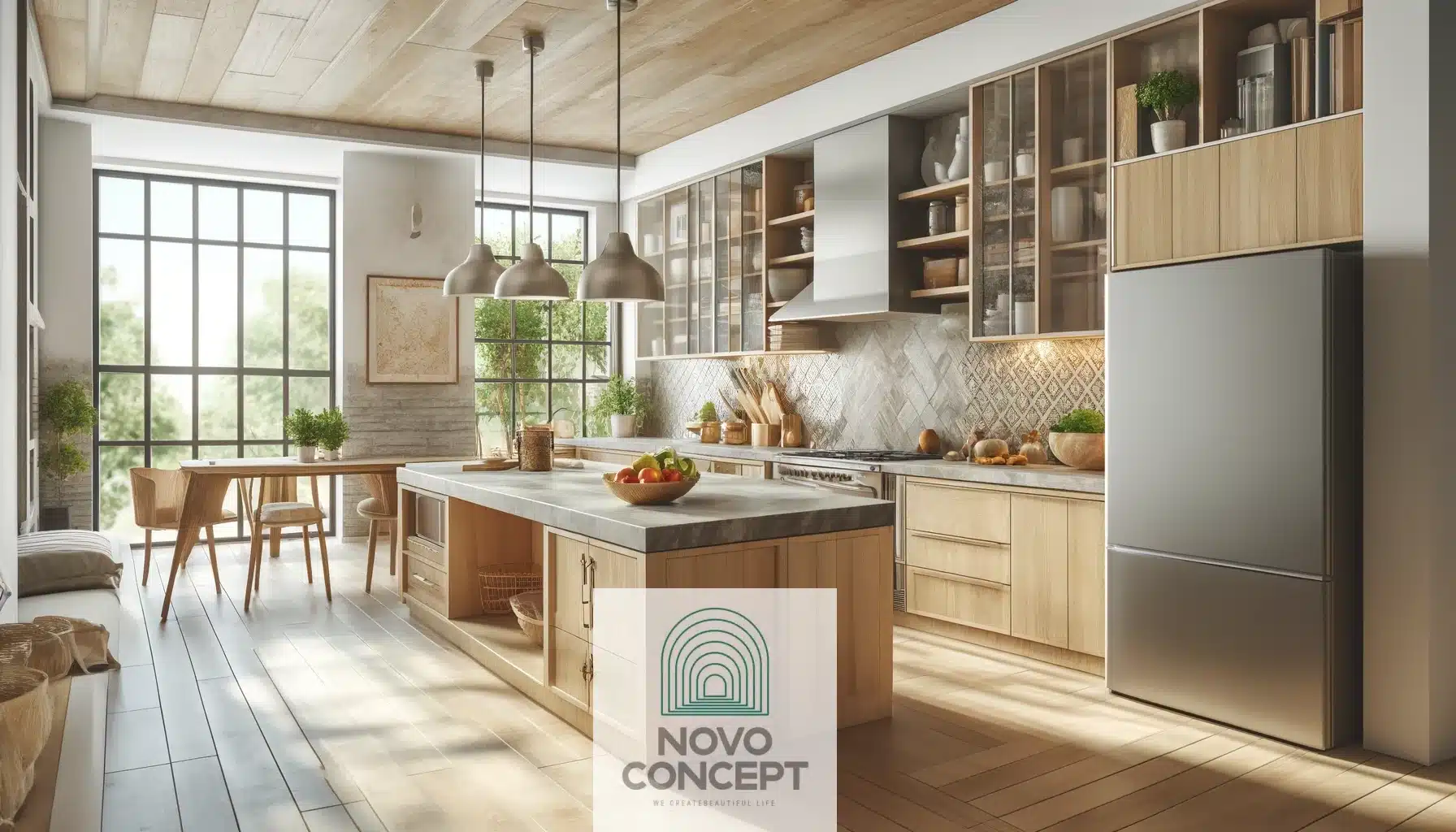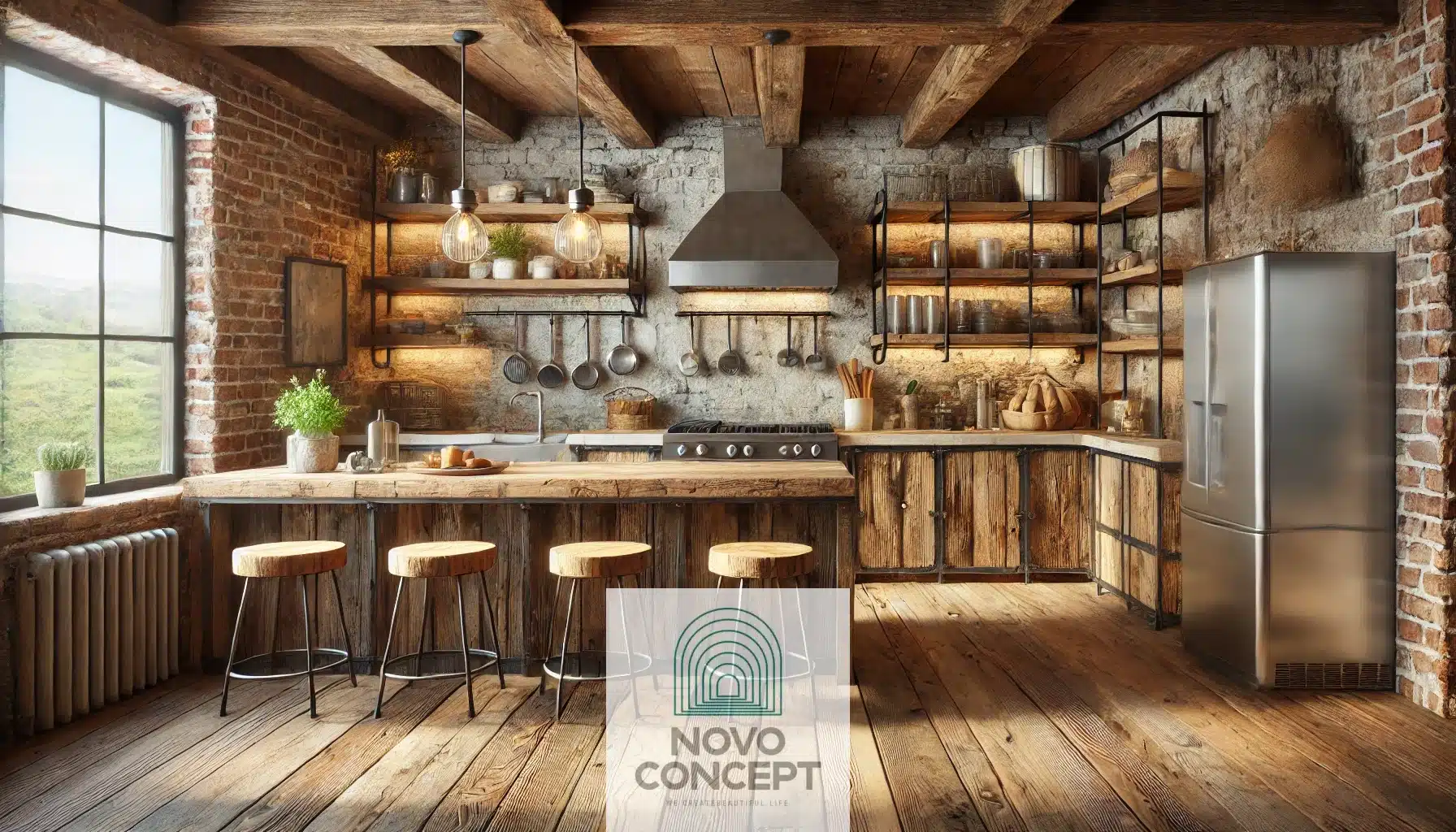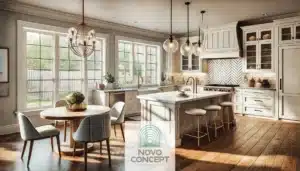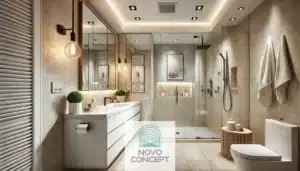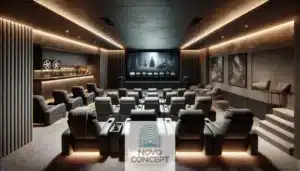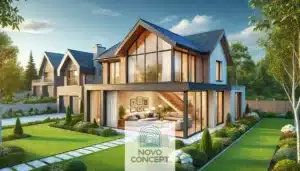The kitchen is the heart of the home, and its design speaks volumes about the personality and lifestyle of its inhabitants. One of the most exciting trends in modern kitchen design is the mixing of materials, textures, and finishes to create a dynamic, personalized space. By thoughtfully combining different elements, homeowners and designers can achieve a harmonious balance that enhances both functionality and aesthetics.
In this article from Novo Concept, we delve into the art of mixing materials in kitchen design. We’ll explore why this approach is so popular, review the pros and cons of various combinations, and share actionable tips for creating a cohesive, balanced kitchen design that reflects your unique style.
Why Mix Materials?
Mixing materials in kitchen design allows for greater creativity, flexibility, and personalization. This approach moves away from traditional monochromatic or uniform designs, creating a more dynamic and visually engaging space. Here are a few reasons why mixing materials is a game-changer:
1. Enhanced Visual Interest
By combining contrasting materials, designers can add depth, character, and intrigue to the kitchen. The juxtaposition of sleek surfaces with textured elements or light tones with darker hues creates a visually stimulating environment that captures attention.
2. Increased Functionality
Different materials have unique properties that make them suitable for specific tasks or areas within the kitchen. For example, durable stone countertops are ideal for heavy-duty tasks, while wood accents bring warmth and comfort to dining areas.
3. Personal Expression
Mixing materials provides endless opportunities for customization, allowing homeowners to showcase their style and preferences. From rustic farmhouse vibes to ultra-modern minimalism, the right combination of materials can bring your vision to life.
Popular Material Combinations and Their Pros and Cons
When mixing materials in kitchen design, the possibilities are endless. Let’s explore some popular combinations and evaluate their advantages and disadvantages.
Wood and Stone
Pros:
- Creates a warm and inviting atmosphere.
- Offers a natural, organic look with timeless appeal.
- Durable and long-lasting, especially when properly sealed.
- Provides a variety of textures and finishes to choose from.
Cons:
- Requires regular maintenance to prevent wear and tear.
- Susceptible to moisture and heat damage without proper treatment.
- Natural materials can be more expensive.
Metal and Glass
Pros:
- Adds a sleek, modern touch to the kitchen.
- Reflects light, making the space feel brighter and more spacious.
- Easy to clean and maintain.
- Resistant to heat and moisture damage.
Cons:
- Can feel cold or sterile if not balanced with warmer materials.
- Shows fingerprints and smudges easily, requiring frequent cleaning.
- Limited options in terms of texture.
Tile and Brick
Pros:
- Adds texture and visual interest.
- Available in a wide range of colors, patterns, and sizes.
- Durable and easy to clean.
- Provides a rustic and charming look.
Cons:
- Grout lines require regular maintenance to keep them clean.
- Overuse can make the space feel heavy or overwhelming.
- Limited finishes compared to other materials.
Laminate Countertops
Pros:
- Affordable and budget-friendly.
- Available in diverse colors and patterns.
- Easy to clean and maintain.
Cons:
- Lacks the elegance of natural or solid-surface materials.
- Prone to wear and tear over time.
- Limited options for texture and finish.
Tips for Achieving Harmony in Mixing Materials in Kitchen
Mixing materials in a kitchen requires a careful balance to ensure the design remains cohesive and functional. Here are some expert tips to help you achieve harmony:
1. Choose a Dominant Material
Start by selecting one primary material to serve as the foundation of your design. This could be a stone countertop, a wood floor, or a tile backsplash. Use this dominant material as an anchor, then layer in complementary materials for contrast and interest.
2. Consider the Overall Style
Think about the aesthetic you want to achieve, whether it’s modern, rustic, industrial, or eclectic. Choose materials that align with your vision and complement existing elements in the space.
3. Mind the Scale
Be mindful of the proportions and scale of the materials you use. Overloading a small kitchen with too many different materials can feel chaotic, while a large kitchen with uniform materials may appear monotonous. Strike a balance by using a few key materials strategically.
4. Create Balance
Balance is key to a cohesive design. For instance, if you use a bold, patterned material, offset it with simpler, more neutral elements. Similarly, balance light and dark tones to create depth without overwhelming the space.
5. Experiment with Texture
Mixing textures is a great way to add dimension to your kitchen. Pairing smooth finishes like glass or polished metal with rough textures like reclaimed wood or stone can create a dynamic, tactile experience.
6. Pay Attention to Transitions
Seamless transitions between materials can help maintain a cohesive flow. Use design elements like trim, edging, or transitional tiles to bridge different materials smoothly.
7. Seek Inspiration
Draw inspiration from design blogs, magazines, and social media. Look for examples of mixed-material kitchens that resonate with your style and use them as a guide for your own design.
Case Studies: Examples of Successful Mixed-Material Kitchens
Modern Minimalism
A minimalist kitchen might combine white quartz countertops, matte black cabinetry, and stainless steel appliances. Adding a natural wood dining table softens the space, creating warmth and balance.
Rustic Charm
A rustic kitchen could feature reclaimed wood beams, stone countertops, and brick backsplashes. Metal light fixtures and hardware add a touch of industrial flair, tying the design together.
Industrial Edge
An industrial-style kitchen might pair concrete countertops with exposed brick walls and metal shelving. Wooden bar stools and soft lighting prevent the space from feeling too stark.
Final Thoughts about Mixing Materials in Kitchen
Mixing materials in kitchen design offers endless possibilities for creativity and personalization. By thoughtfully combining different textures, finishes, and materials, you can create a kitchen that is both functional and visually stunning. Whether you’re renovating an existing space or building a new one, use these tips to guide your design and achieve a harmonious, balanced look that reflects your unique style.

